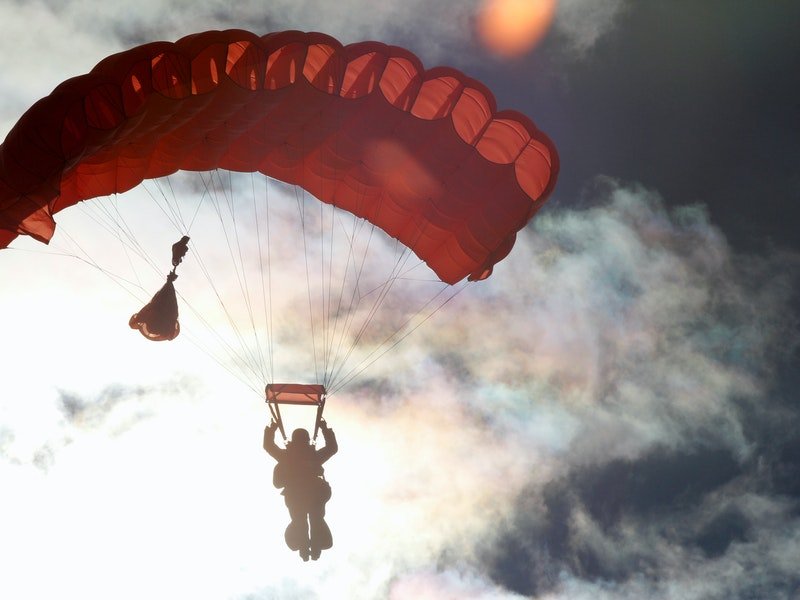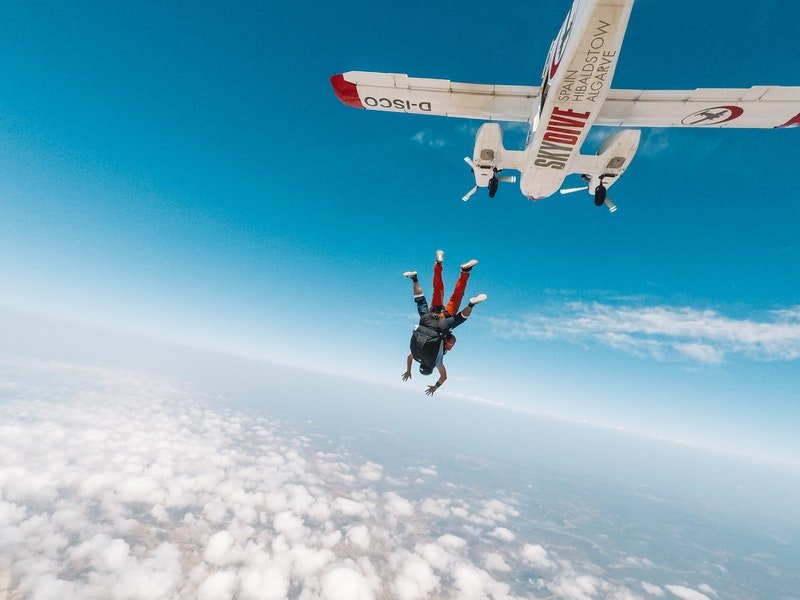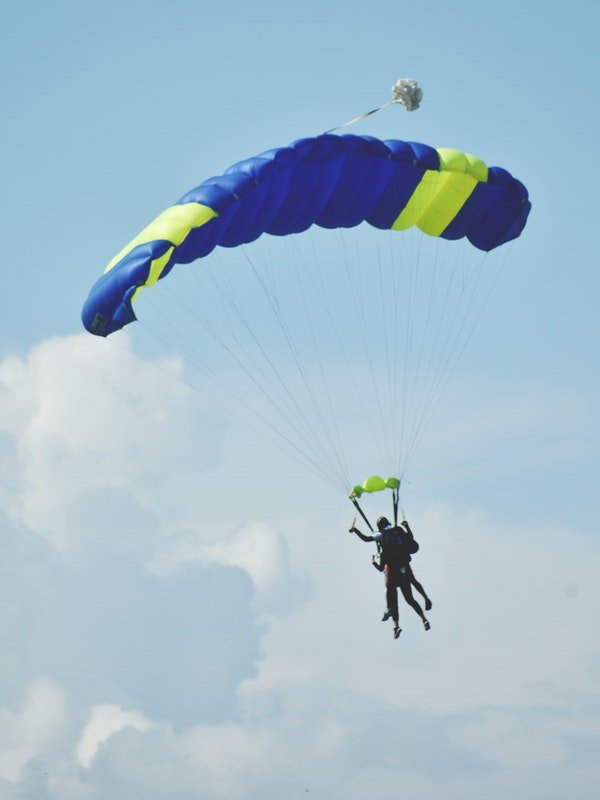If you’ve looked into taking up skydiving, you’ll have to start with a tandem skydive, but you might be asking the question; is tandem skydiving safe?
It’s the only way you can start to jump, being strapped to a trained, well-experienced professional. This should be reassuring enough, but incidents can still happen even though it’s considered the safest form of skydiving.
So is tandem skydiving safe? Let’s take a deeper delve to find out.
How many people die from skydiving tandem?

From 2010 to 2019, there were on average 21 skydiving deaths per year (not including tandem), and in 2018 there were just 18 deaths, but over 3.3 million jumps were made in the same year. This is because training has become so good and is at such a high level that accidents and deaths are incredibly low.
In fact, the majority of those deaths are due to elite skydivers pushing the boundaries of the sport, whether that’s jumps at lower/higher altitudes or using smaller parachutes that are harder to control.
But let’s look at tandem skydiving, which is actually the safest form of skydiving you could perform.
As it’s something that could well put people off, the National Safety Council, along with the United States Parachute Association (UPSA) put the numbers together, and in the past ten years, one tandem skydiver was killed for every 500,000 jumps.
One in half a million may sound high to some or low to others, so to put that into perspective, you’re more likely to be killed being stung by a bee or being hit by lightning. In percentage terms, that equates to a .000002% chance of death.
What are the risks of tandem skydiving?
Now let’s take a look at the risks of jumping tandem; well, the first starts with the kit.
Parachute

Due to the increased weight that tandem chutes have to deal with, they’re a lot slower to deploy and to control in the air. So rather than being like a sportscar as a single parachute would be, think of a tandem as a huge 18-wheeler.
Parachutes can also become tangled when they deploy; this means they don’t fully open and can induce a spin. When this happens, the main canopy can be cut away; this will stop the spin and set you back into freefall.
This is where your reserve parachute comes in; as long as you’re high enough, you can pull the reserve chute, and that should deploy, allowing you to land safely.
Around one in a thousand jumps results in the main canopy not deploying as it should.
You’ll be with an experienced instructor, so if the worst was to happen, you should be fine, but accidents do still happen when it comes to tandem skydiving.
Instructor

But what if something happens to the instructor you’re jumping with? What if he blacks out or becomes concuss? You could be left falling through the air with no control.
Thankfully there are devices that can automatically deploy the reserve parachute for you. These are called AAD’s or Automatic Activation Devices.
It’s a small piece of tech that sits inside your parachute rig. By measuring air pressure and speed, it knows when you’re in freefall and what height you should have deployed the main parachute.
If you’ve failed to pull your chute, the AAD will ‘pull’ it automatically. It does this by setting off a small cutter which releases the reserve chute. AAD’s are a last resort, but they’re still a nice safety device to have, just in case.
Landing

By far, the most common risk of tandem skydiving is the landing; injuries from this are due to not listening to the brief properly.
When skydiving in tandem, it’s critical to raise your legs when you’re coming in to land – two pairs of legs trying to land and then run to slow down just doesn’t work. So you need to clear your legs out of the way and let the instructor do the work.
As the ground approaches, your instructor will tell you to raise your legs; if you don’t, you could well end up breaking an ankle – which is the most common tandem injury, believe it or not.
Broken ankles can happen as you try and put your foot down on the ground, but being unsteady due to not having any landing practice, you can roll your ankle to its side. Add the extra weight of another person to that, and it’s easy for a break to happen.
So listen to your instructor in the brief, and don’t get caught up in the moment with all those surging endorphins.
What if you want no risk skydiving?

There’s no such thing as skydiving without risk; you’re doing something humans aren’t meant to do and putting your faith, your life into others’ hands, and pieces of equipment.
If you want no risk, then skydiving isn’t for you. Don’t enroll in any type of parachuting course.
The very lowest risk way to experience skydiving is to do it indoors. You can experience all the exhilaration of freefall in an indoor, controlled environment without the dangerous ‘parachute’ bit.
If you want to look at the numbers in-depth, here’s a great link by British Skydiving that has correlated the UK numbers from 2016-2020. It breaks the injuries down into different categories, including things as minor as cuts and bruises.
Is tandem skydiving safe?

Nothing in life is without risk, from jumping in the car to go to the local grocery store or walking across a street. There are inherent dangers all around us that we never think about or even consider.
Danger increases the more you step out of everyday norms, humans weren’t meant to fly, but we get in planes without a second thought. Humans flying without a plane ups the risk even more.
While deaths and some really tragic accidents can occur during tandem skydives, as we’ve seen, 1 in 500,000 is an incredibly small number.
If you’re using the word safe and thinking it’s 100% safe, then no, it’s not. But then again, nothing in life is.
Is tandem skydiving safe? Yes and no.


1 Comment
It’s great to know that tandem skydiving only has fatal accidents in about 1 out of 500,000 instances which means that is really low risk. With that in mind, I can have the assurance that I can be safe together with a professional for the first time that I’m going to try this kind of activity. This is one of the things listed on my bucket list which is why I cannot wait to take it off, I want to be sure that it will be safe for me even if I am a first-timer.